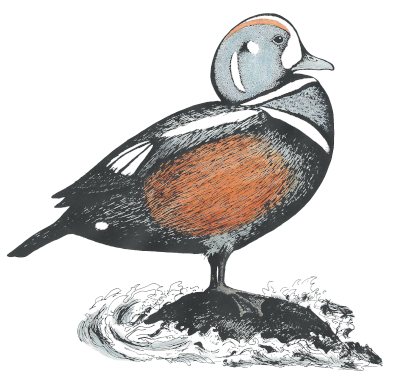
Betulaceae - birch family
Leaves of the birch family are simple and grow alternately on the stem. Some species have spur shoots (also called “short shoots”) that grow very little each year, and on these shoots leaves can appear, without close inspection, to be opposite each other. Leaves are doubly serrate, a feature more evident in some species than in others. They are pinnately veined; that is, they have a primary vein, sometimes called a midrib, that runs the length of the leaf blade and secondary veins branching from it along its entire length.
Flowers are unisexual; each flower is either staminate (with stamens bearing pollen) or carpellate (with carpels containing ovules that develop into seeds). Because both kinds of flowers are found on the same tree/shrub, the plants are called monoecious (moe-NEE-shus), from the Greek monos (single) and oikos (house). Flowers of a single sex, along with subtending bracts, are aggregated in what are called aments—staminate flowers in staminate aments and carpellate flowers in carpellate aments. Staminate aments are formed in the fall (except in the genus Carpinus), and with the warmer weather in the spring they become pendant and the pollen is shed. This happens before leaves emerge from the buds because species of the birch family are wind pollinated. Because staminate aments develop in the fall and are visible during the winter prior to pollen she, they are often called “preformed”. Carpellate aments do not appear until the buds containing them open in the spring. There is much more variety of carpellate aments among species than staminate aments. For example, in the genus Betula (birch) a carpellate ament with fully developed seeds falls to pieces, dispersing both seeds and bracts. In alders (Alnus), however, the carpellate aments remain intact on the twigs following seed dispersal and, with their bracts now having become almost woody, they have a cone-like appearance.
Mount Desert Island is home to 9 species and 1 hybrid in 5 genera that grow without cultivation. (There are only 6 genera of Betulaceae worldwide; Ostryopsis grows in eastern Asia.) Click on a link below or scroll down for more information.
Alnus (2 species)
Alnus incana - speckled alder (common [see note 1 at bottom of page])
Alnus viridis - green alder (common)
Betula (4 species and 1 hybrid)
Betula alleghaniensis - yellow birch (common)
Betula x caerulea - blue birch (occasional)
Betula cordifolia - mountain paper birch) (occasional)
Betula papyrifera - paper birch (common)
Betula populifolia - gray birch (common)
Carpinus (1 species)
Carpinus caroliniana ssp. virginiana - American hornbeam (rare)
Corylus (1 species)
Corylus cornuta - beaked hazelnut (common)
Ostrya (1 species)
Ostrya virginiana - eastern hophornbeam (occasional)
Alnus (alder)
The word “alnus”, beginning with a lowercase letter, was the name used by the ancient Romans for an alder and for objects made of its wood. Alnus, beginning with an uppercase A, is now the scientific name for the genus. Of the three species of alder in Maine, two grow on Mount Desert Island. The third species, Alnus serrulata (smooth alder), grows in southern Maine and is known to hybridize with Alnus incana (speckled alder). There is, however, no report of hybridization between MDI's two alder species. The times of shedding pollen do not overlap—speckled alder has finished shedding its pollen well before green alder begins—and it may be that the times of pollen receptivity by carpellate flowers are also sufficiently separate that no cross-pollination occurs. This is a subject requiring observation. Both pictures below were taken on 18 April 2008, clearly showing the difference in development between the two species. Observations are reported below under each species.
Distinguishing between MDI's two alders in the winter is relatively straightforward. The buds of speckled alder (below left) are clearly stalked (vs. sessile or with a stalk no more than 1 mm long for green alder, below right), rounded at the apex (vs. acute [pointed] for green alder), scurfy-pubescent (vs. glabrous for green alder), and brownish (vs. reddish for green alder).
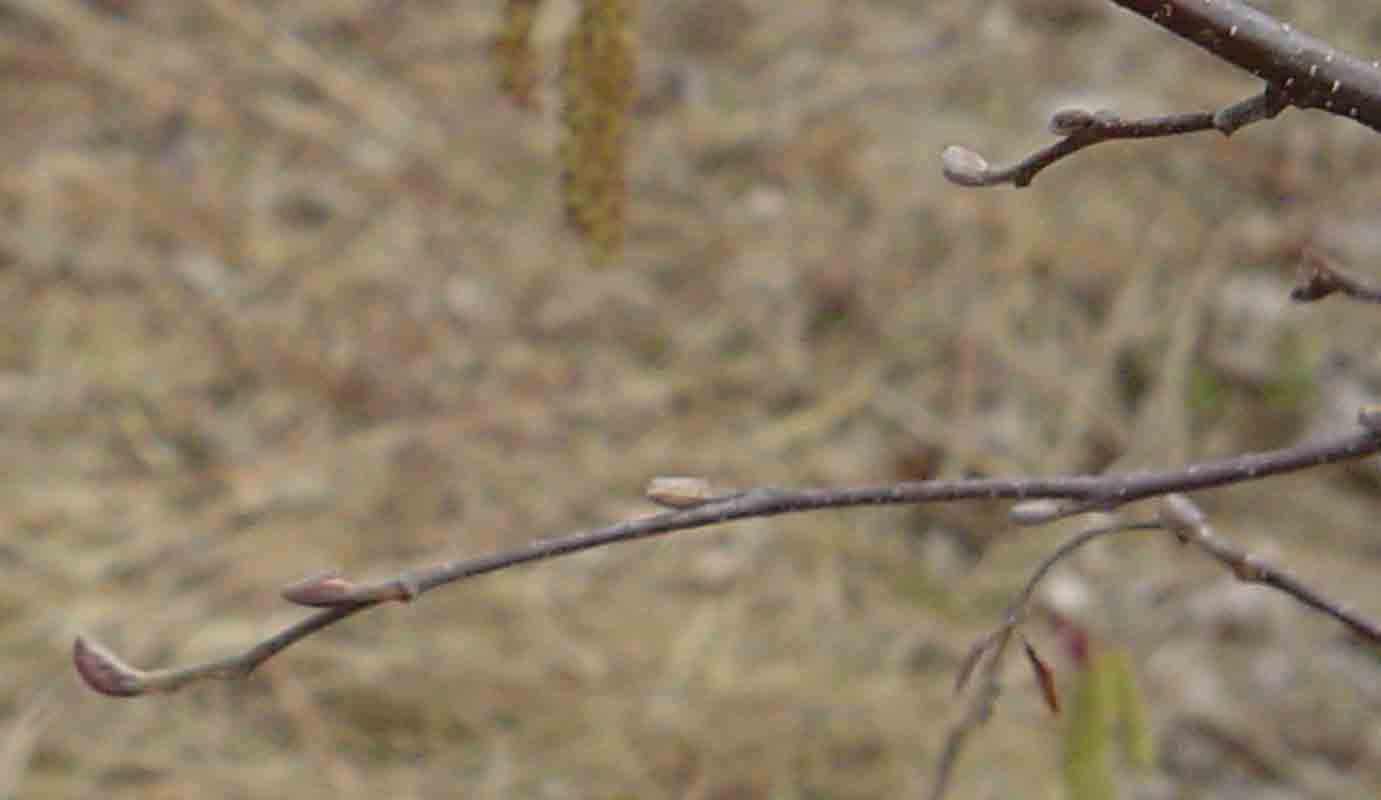
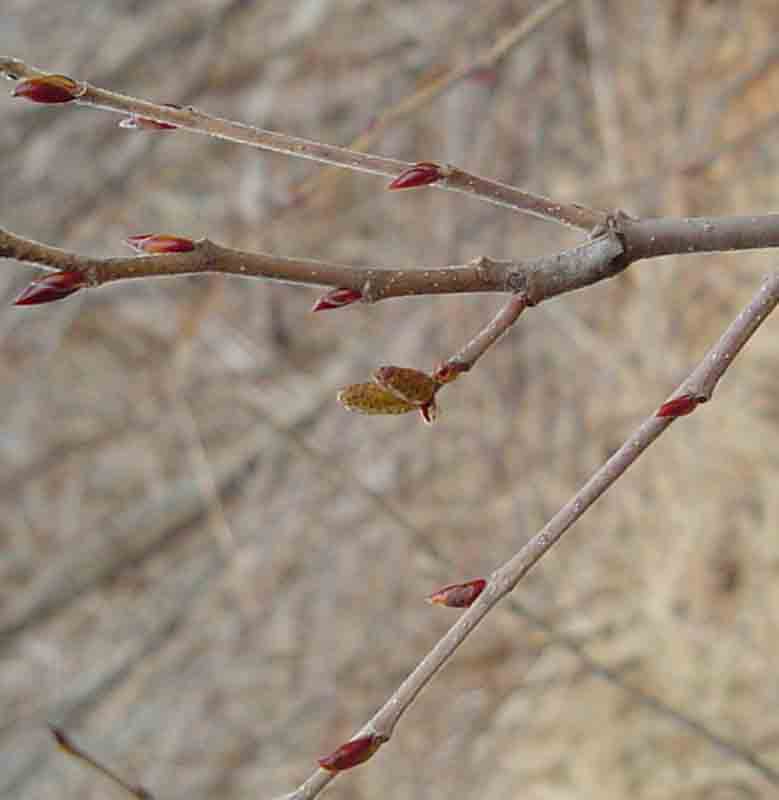
(click on an image to enlarge)
Alnus incana (speckled alder) is a species generally of low, wet areas on MDI. Although the specific epithet incana means gray or hoary, the common name speckled likely refers to the light-colored lenticels that stand out against the darker bark. Like other members of the wind-pollinated birch family, pollen is shed early in the season, before leaves have expanded. Following is a record of observations.
20 March 2010 - near south side of Beaver Dam Pond: pollen being shed [TFV]
6 April 2008 - along Park Loop Road, near precipice: “shedding of speckled alder pollen” [JEW]
8 April 2008 - intersection of road between Route 3 and Park Loop Road with road leading to Sieur de Monts: two trees shedding pollen and with carpellate flowers open [TFV]
9 April 2008 - woods road off Route 102, just north of intersection of 102 and south end of Cape Road: Alnus incana shedding pollen [TFV]
25 April 2008 - pollen shed apparently completed, at least at lower elevations [TFV]
Alnus viridis (green alder) tends to grow in somewhat drier areas than A. incana.
9 April 2008 - woods road off Route 102, just north of intersection of 102 and south end of Cape Road: not close to shedding pollen; the staminate aments stiff and unexpanded. [TFV]
25 April 2008 - southern half of Breakneck Road: no sign of pollen shed [TFV]
21 May 2008 - Big Moose Road (Bass Harbor): pollen shed completed [TFV]
Betula (birch)
The name of the genus comes from betulla (yes, with a double “l”), used by ancient Romans (e.g., Pliny in his discussion of aboriculture in book XVI of his Natural History [16:74, 176, and 209 in the Loeb Classical Library edition]) for the birch tree [Oxford Latin Dictionary]. Bark on mature trees is distinctive, white (and exfoliating in some species) or golden.
Betula alleghaniensis (yellow birch). The bark (see image below left) of yellow birch is a yellowish brown and separates in curls (vs. sheets in paper birch). If you scratch a twig (deep enough to see its light-colored inner portion), you will smell a wintergreen odor. This is the only birch on MDI that has this smell. The leaves (see image below right), like other members of the Betulaceae, show the characteristic doubly toothed margin.
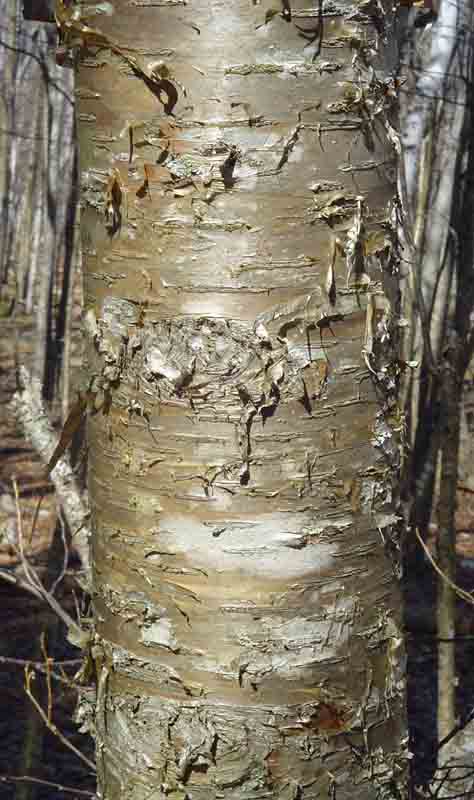
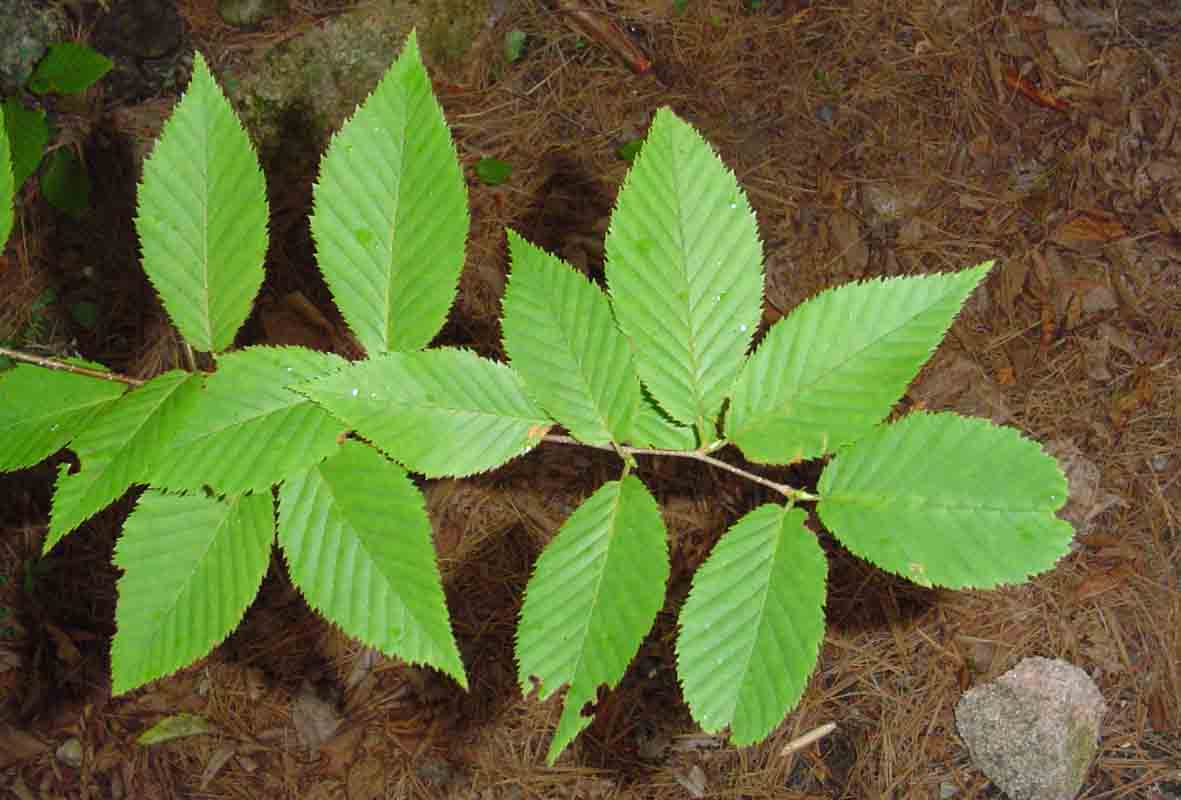
(click on an image to enlarge)
Betula alleghaniensis often has what are called “short shoots” (see image below), branches that grow very little in a single year. The shoot below the branch and to the right, for example, is at least 10 years old. When leaves grow on short shoots, they may be erroneously thought to be opposite (a common perception with paper birch), but knowing that leaf arrangement (alternate, opposite, or whorled) and a tree or shrub's branching pattern are the same will help avoid this mistake.
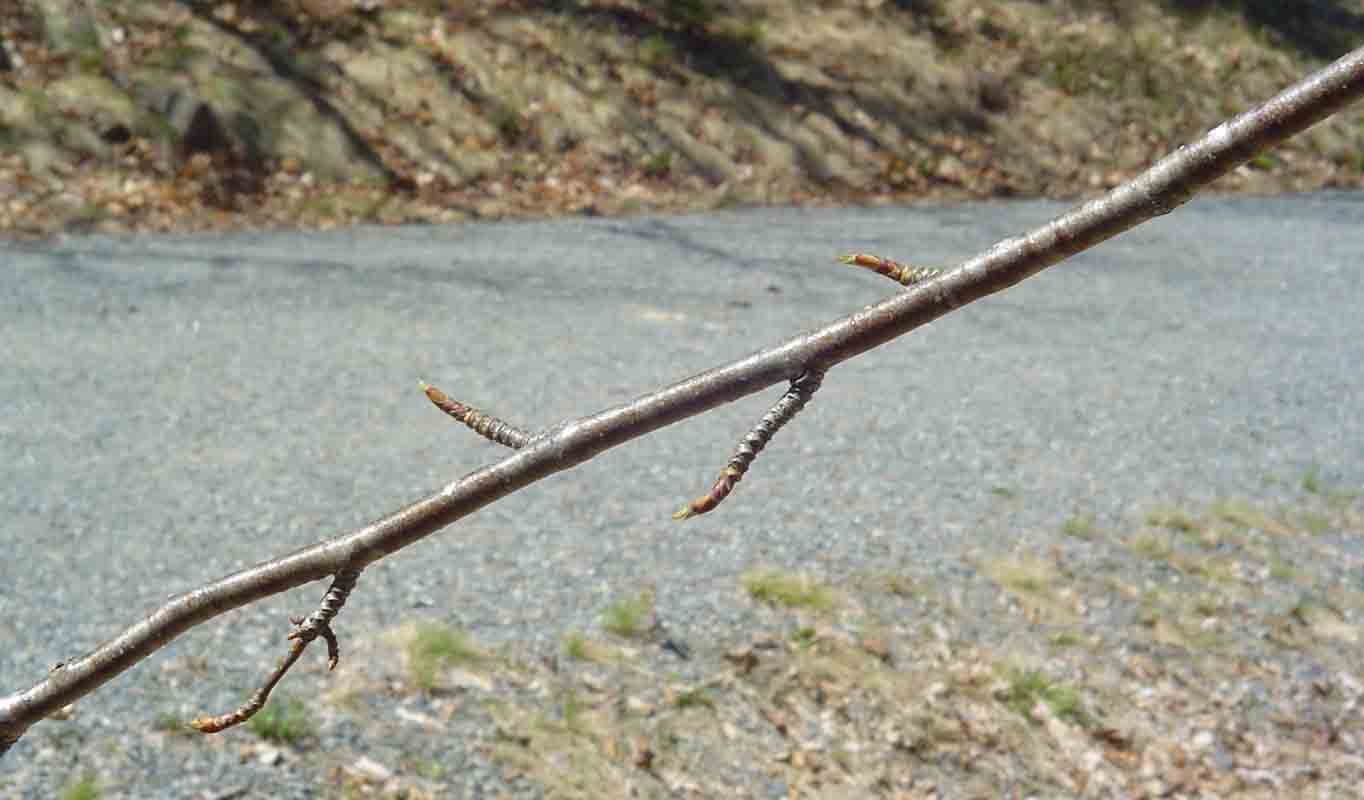
(click on image to enlarge)
Betula x caerulea (blue birch) - [no information yet]
Betula cordifolia (heart-leaved paper birch) - [no information yet]
Betula papyrifera (paper birch) when young (see image below left) looks very much like the closely related alder, but when it ages, its bark takes on the familiar color and appearance (see image below right).
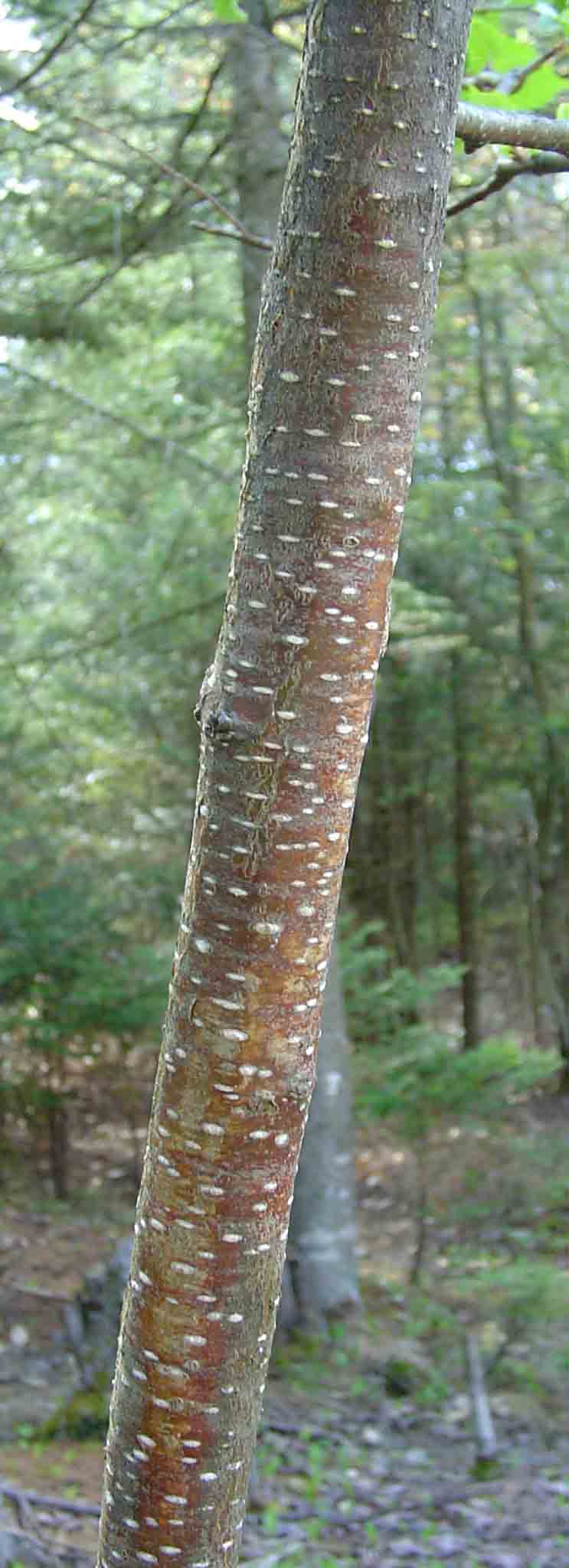
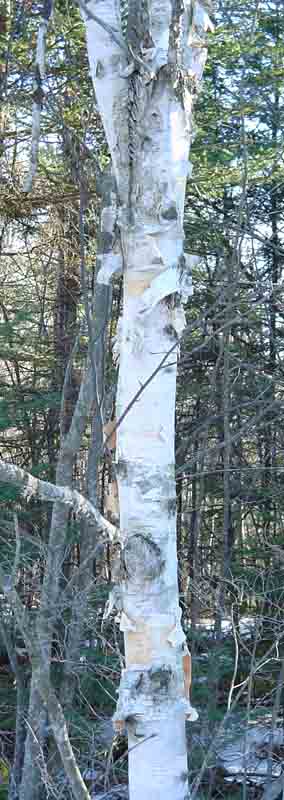
(click on an image to enlarge)
The preformed staminate aments grow often in groups of three and are much thicker than those of B. populifolia (compare the images of young and older aments immediately below with the corresponding image of B. populifolia staminate aments further below).
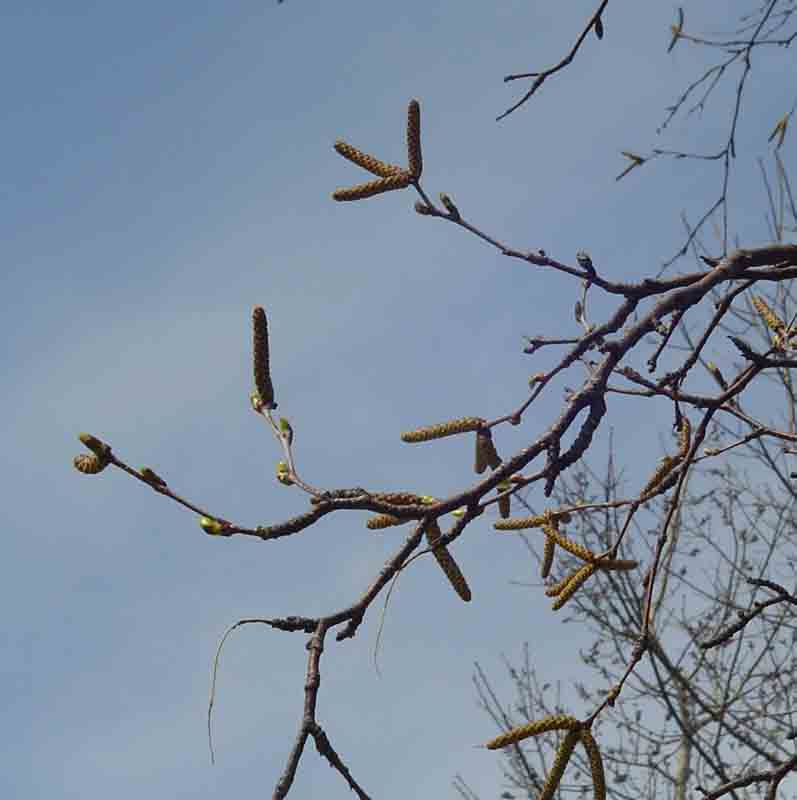
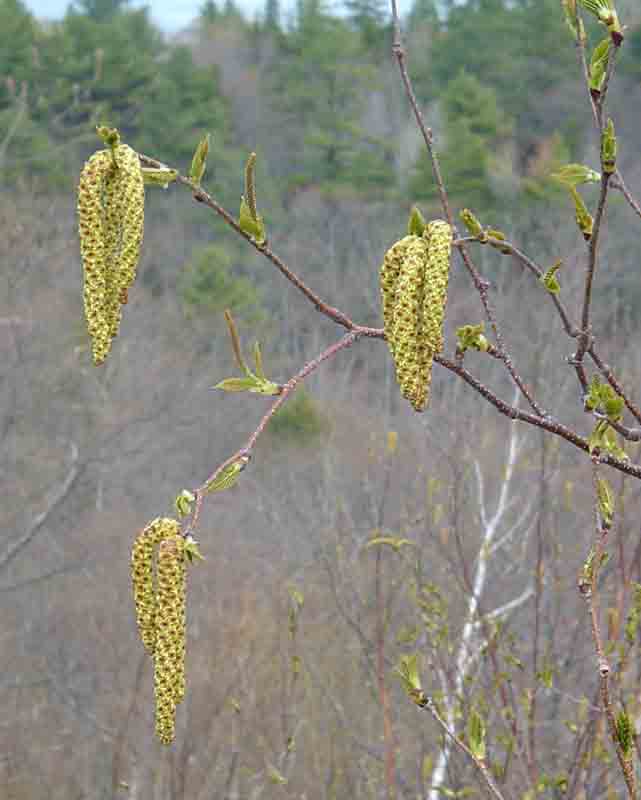
(click on an image to enlarge)
Betula populifolia (gray birch) means the birch with poplar-like leaves. The leaves of two common poplars, Populus tremuloides (quaking poplar or quaking aspen) and Populus grandidentata (big-toothed poplar or big-toothed aspen), flutter noticeably in even relatively little air movement, a result of their petioles (leaf stalks) being flat. The leaf petioles of gray birch aren't flat, but they are long enough for the movement of the leaves in a slight breeze to resemble that of the poplars mentioned above.
Gray birch leaves (see image below) are quite triangular, with a long, tapered apex. An easy way to remember the name gray birch is to note that the leaves resemble, with a little imagination, a front view of the head of an elephant (the tapering leaf apex being its trunk), a gray animal.
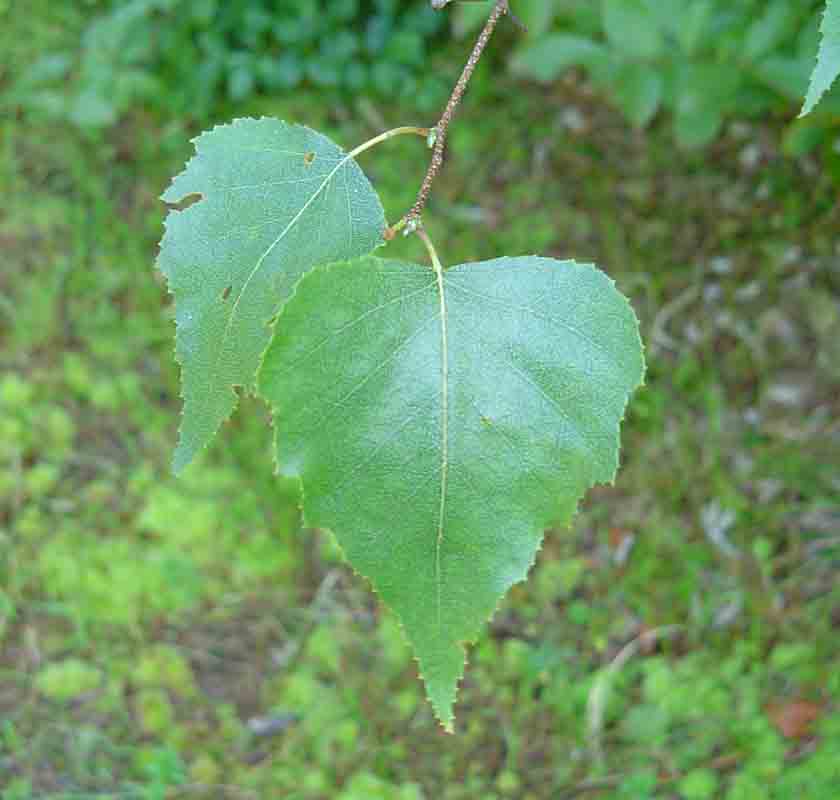
(click on image to enlarge)
The preformed staminate aments of Betula populifolia usually grow singly and are much thinner than those of B. papyrifera (compare the image below left with the corresponding image of B. papyrifera staminate aments above). In the spring they elongate and become pendulous (lower right), and they shed pollen. Note the presence of erect carpellate aments.
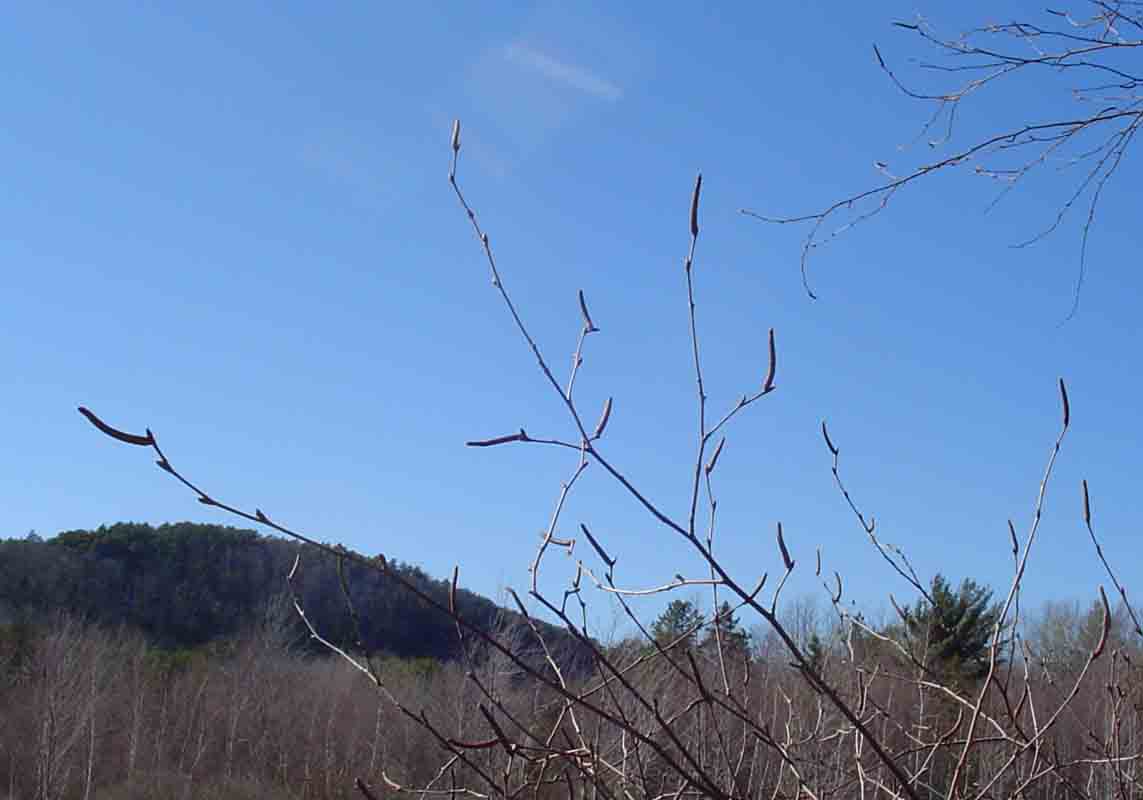
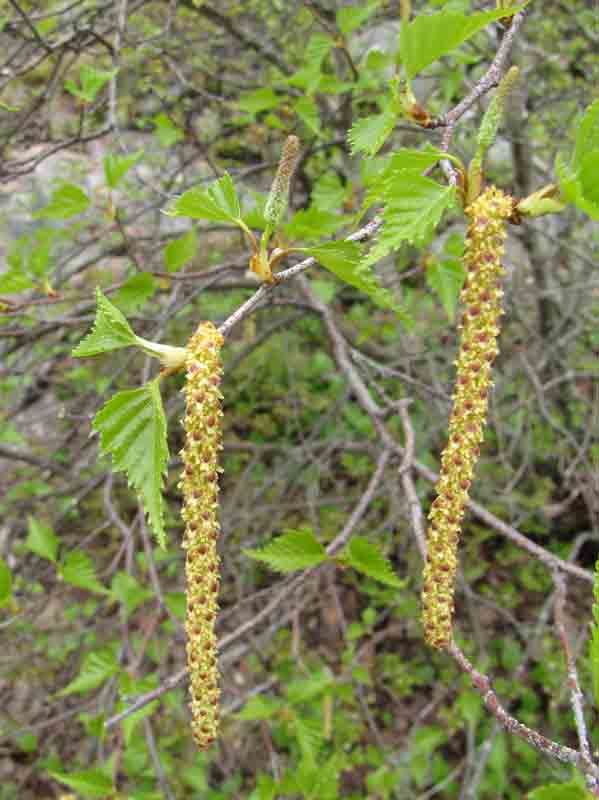
(click on an image to enlarge)
Carpinus (hornbeam)
Carpinus caroliniana (American hornbeam) - [no information yet]
Corylus (hazelnut)
The word corylus (beginning with a lowercase letter) was used by the ancient Romans (e.g., Pliny in his discussion of aboriculture in book XVII of his Natural History [17:67 in the Loeb Classical Library edition]) for the “hazel-tree” [Oxford Latin Dictionary].
Corylus cornuta (beaked hazelnut). Both the specific epithet cornuta, an adjective meaning horned, and the English adjective beaked refer to the prolonged husk (bracts greatly expanded and fused during fruit development) that encloses the nut (see image below). This nut, sometimes called a filbert, is sweet and edible, a fact that has not been lost on squirrels, who tend to be much more proficient than humans at collecting them.
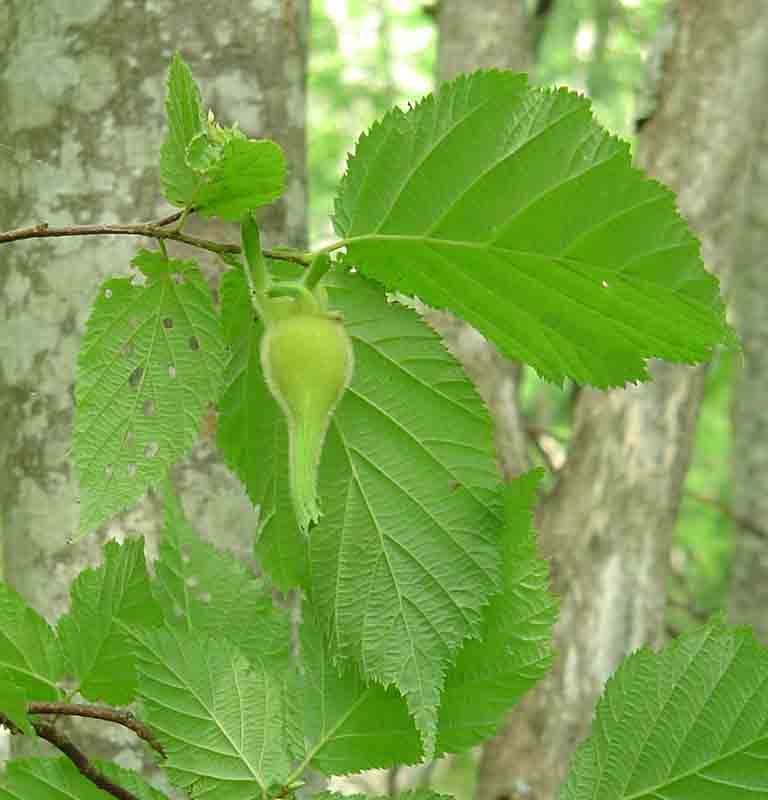
(click on image to enlarge)
18 April 2008 - Great Meadow loop: “in flower ... magenta stigmas and males shedding pollen” [JEW]
Ostrya (hop-hornbeam)
The genus name Ostrya comes from a Greek tree mentioned by Pliny in a brief discussion of infelicia ligna, translated as “unlucky wood” in the Loeb Classical Library edition of his Natural History (13:116-117), in which he described the wood of a Greek tree “named the ostrys, another form of the name being ostrya,” as being “hard and solid”. Pliny went on to report that “it is said that if it is brought into a house[,] it causes difficulty in child-birth and painful deaths.”
Ostrya virginiana (eastern hop-hornbeam), the sole member of the genus on Mount Desert Island (and the only Ostrya species with any sizable range in North America), has very hard wood and thus has been used for tool handles. The image at the right shows the distinctive so-called “cat-scratch” bark.
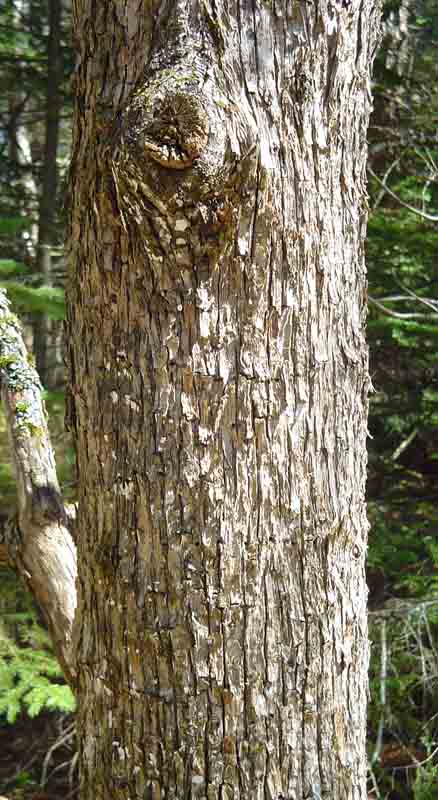
(click on image to enlarge)
Note:
1. Frequency designations are from the paper “Vascular flora of the Acadia National Park region, Maine” by Craig W. Greene, Linda L. Gregory, Glen H. Mittelhauser, Sally C. Rooney, and Jill E. Weber, published in the spring 2005 issue (vol. 107, No. 930) of Rhodora: Journal of the New England Botanical Club.
Sources:
Champlainers:
TFV = Thomas F. Vining
JEW = Jill E. Weber